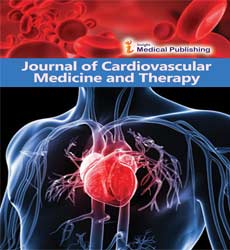Analysis of conventional and nonconventional risk factors, clinical profile, and angiographic correlation in young myocardial infarction at the tertiary care center.
Abstract
Acute myocardial infarction in the young, is an emerging health problem and require special attention in its clinical profile, risk factors and prognosis which are different from that in older patients and are more common among Asian origins. The present study is an attempt to analyse the clinical profile, conventional and non conventional risk factors and angiographic pattern of acute myocardial infarction in young individuals (<40 years of age). Total of 110 patients aged 40 years or younger who underwent coronary angiography (CAG) in the Department of Cardiology, Coimbatore medical college hospital Coimbatore between December 2019 to February 2021 were included in this study. Demographic characteristics, risk factor profile, laboratory test results, electrocardiographic and echocardiographic findings, CAG findings, and in- hospital mortality were as¬sessed. All subjects completed the Hospital Anxiety and Depression Scale (HADS) to assess anxiety levels or presence of depressive symptoms as a potential risk factor among young patients. The mean patient age was 35.6 ± 4.4 years. Men made up 87.2% of the study sample. STEMI was present in 93.6 % of acute MI while remaining had NSTEMI. CHF (Killip class II or III) was present at hospital admission in 14.4% patients and CHF developed later during hospitalization in an additional 5.5% patients. Angiographically normal coronary arteries were found in 8.8% of patients with the diagnosis of ACS. Single-vessel disease was identified in 75.9% of patients with a positive result of CAG (steno¬sis>50%), double vessel disease in 11.7%, triple vessel in 3.6% patients. The most common location of significant atherosclerotic coronary lesions was the left anterior descending artery (60.1%) followed by the right coronary artery (32.4%). The most prevalent conventional cardiovascular risk factors were lipid abnormalities, cigarette smoking and an increased body mass index ≥ 25 kg/m2, followed by non conventional risk factors in form of anxiety/depression, hyperhomocysteinemia/ lipoprotein a elevation and hypertension. The findings showed that 25.5% of the respondents had anxiety caseness and 29.8% of the respondents had depression caseness. Acute myocardial infarction is rising concern among young individuals and forces burden on society. Significant risk of CHF on presentation and STEMI most common cases. Modifiable risk factors constitute primary etiology with less commonly evaluated cause as anxiety, depression and hyperhomocysteinemia/ lipoprotein a elevation need to be monitored regularly, provide regular counselling services, and plan the treatment accordingly. LAD involvement is main culprit vessel with 8% revealing normal coronaries suggesting microvascular dysfunction important process other than atherosclerosis.
Open Access Journals
- Aquaculture & Veterinary Science
- Chemistry & Chemical Sciences
- Clinical Sciences
- Engineering
- General Science
- Genetics & Molecular Biology
- Health Care & Nursing
- Immunology & Microbiology
- Materials Science
- Mathematics & Physics
- Medical Sciences
- Neurology & Psychiatry
- Oncology & Cancer Science
- Pharmaceutical Sciences
